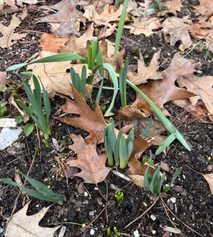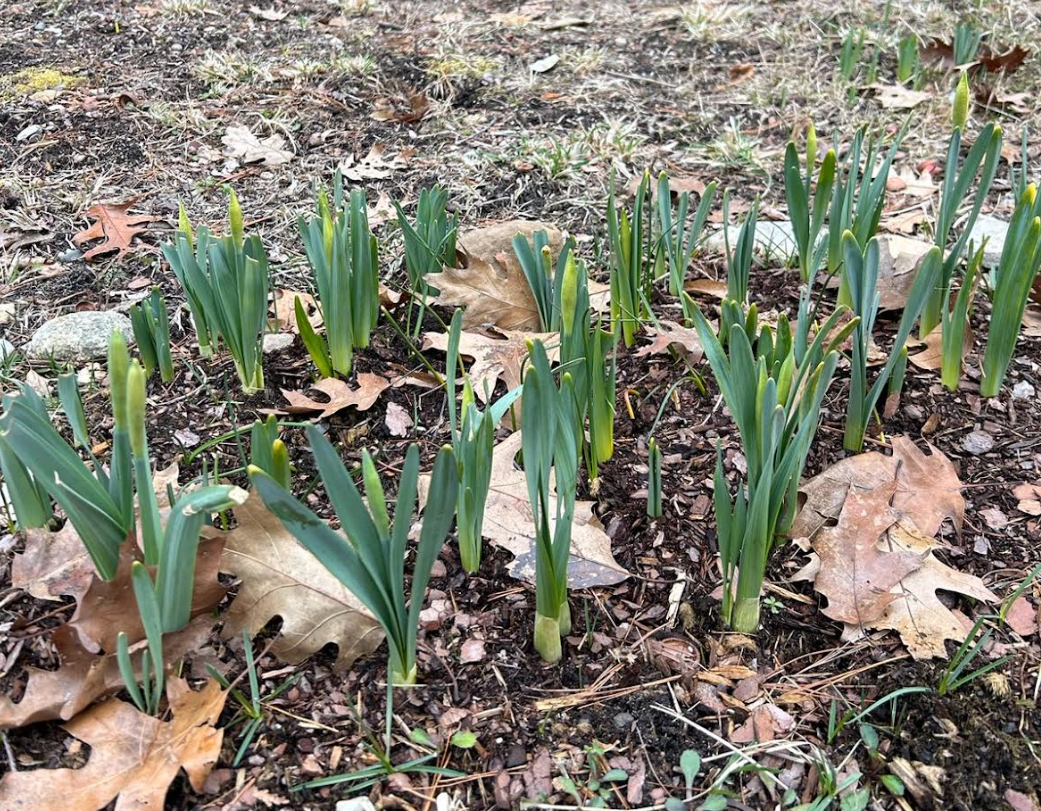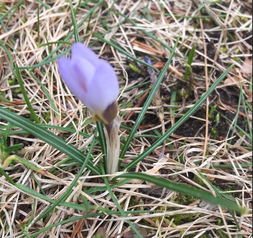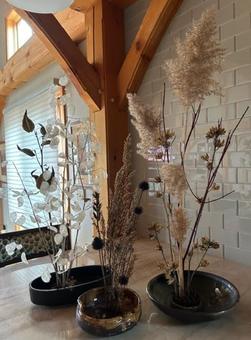March
Spring flowers in the neighborhood are getting ready for their show!
March 19
The first day of spring was off to a cold start after a warm winter, and as you travel by grassy wetlands or along roadside areas, you may have noticed some greenery appearing. If you see a low-growing clump of bright green shoots, chances are likely it is a Carex species, or "sedge" species as some of these species tend to emerge in the early phases of spring. These hardy and beautiful grass-like plants of wetlands are often overlooked and challenging to identify, but some species are more forgiving for those interested in botanical identification, like lake sedge (Carex lacustris). Lake sedge can be found growing in open and partly shaded wetlands with shallow water levels. This hardy plant can tolerate flooding and dry soils in the same season and is an important nesting habitat for many species of wildlife in the wetlands of the Elk Rapids area. According to Prairie Moon Nursery, "Lake sedge is a host plant for many Lepidopteran species, including the Broad-Winged Skipper, The Eyed-Brown butterfly, and the Appalachian Brown butterfly. The seeds are consumed by many waterfowl and songbirds, while the roots are sometimes consumed by wetland mammals." _Angie Bouma, Senior Naturalist, Grand Traverse Regional Land Conservancy.
Foraging for flower arrangements in the winter is a creative project while hiking around the village, especially where native grasses and shrubs are left standing til spring. (I am not foraging in neighbors’ yards!) _ Christine Petersen
March 20
My backyard has been filled with finches. I have had to fill their feeders almost daily. Finches had been my only visitors until the beginning of this week when a flock of blackbirds landed and cleaned out of three feeders of safflower seeds and one container of suet balls by the end of the day. The ring camera in my backyard has caught racoons, opossums, and neighborhood cats strolling across the deck at night. _Terri Reisig
A friend lives on the bay just south of town and has seen an eagle flying each day along the shoreline. She watches it dive for and catch a fish and then fly away; in fact, on one exceptionally windy day, it dropped the fish but flew back around and grabbed it out of the water again. _(Friend on the Bay)_Terri Reisig
A friend lives on the bay just south of town and has seen an eagle flying each day along the shoreline. She watches it dive for and catch a fish and then fly away; in fact, on one exceptionally windy day, it dropped the fish but flew back around and grabbed it out of the water again. _(Friend on the Bay)_Terri Reisig
Coming April 8
Total eclipse of the sun. Michigan will be in the path of a total solar eclipse occurs on April 8, for the first time in 70 years. A total solar eclipse occurs when the moon passes between the sun and the earth, completely blocking the sun and darkening the sky. The April 8 eclipse will start at approximately 1:58 p.m. in southeast Michigan and reach maximum totality around 3:14 p.m. It will conclude with a final partial eclipse at about 4:27 p.m. The next total solar eclipse visible in the United States will be Aug. 23, 2044 but most of the state doesn’t fall on the line of totality, according to NASA. Michiganders won’t be able to see another total solar eclipse without traveling out of state until Sept. 14, 2099. _Bridge Michigan
More details: https://www.bridgemi.com/michigan-environment-watch/what-know-about-april-8-total-solar-eclipse-michigan https://science.nasa.gov/eclipses/types/
NOTE: Safe special glasses are necessary. Safe glasses can be purchased locally at Enerdyne, 223 N St Joseph St, Suttons Bay, MI 49682, (231) 271-6033
More details: https://www.bridgemi.com/michigan-environment-watch/what-know-about-april-8-total-solar-eclipse-michigan https://science.nasa.gov/eclipses/types/
NOTE: Safe special glasses are necessary. Safe glasses can be purchased locally at Enerdyne, 223 N St Joseph St, Suttons Bay, MI 49682, (231) 271-6033




